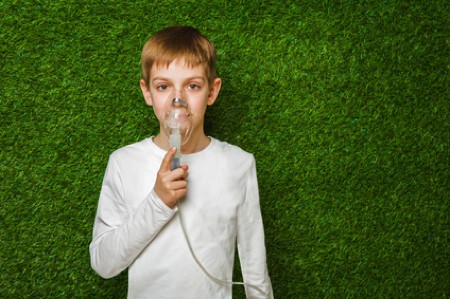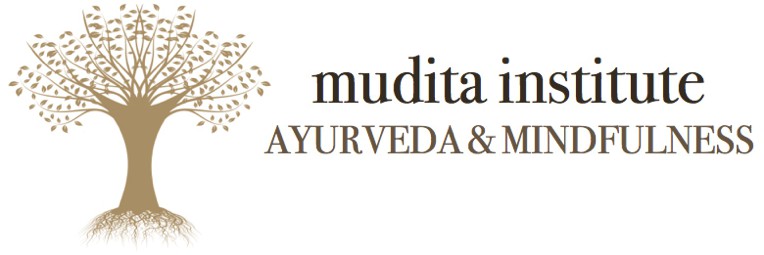By Kester Marshall
With approximately one in ten people being diagnosed with Asthma as a long term health problem, it is the most widespread chronic health problem in Australia. It is one of the leading causes of children being hospitalised and it is thought that up to half of the people over 55 years old with asthma have not even been diagnosed.
Asthma is a chronic inflammatory disease which causes the lining of the airways to become swollen and inflamed, the smooth muscles of the airways to tighten, and in many cases the production of thick, sticky mucous. These changes cause the airways to become narrow, making it difficult to breathe. For many people with asthma, symptoms only occur when an acute ‘attack’ is triggered by inhaling an allergen such as pollen or dust mites, it can be induced by exercise (especially in cold, dry weather), or in conjunction with an upper respiratory infection (cold or flu).
The cause of Asthma from a western medical perspective is complex, involving genetic and environmental interactions, and is not completely understood. Although there is considered to be no cure, treatment plans usually include a reduction of contact with any allergens, the use of bronchodilators for the short term relief of symptoms and with persistent symptoms the use of corticosteroids to reduce inflammation.
Classically in Ayurveda, Asthma comes under the category of diseases known as Dyspnoea (Difficult Breathing) or in Sanskrit, ‘Swasa Rog’. This difficulty breathing (or obstructed passage of air) is seen to be caused by the abnormal movement of Vata in the respiratory tract (known as the Pranavaha Srotas), either on its own (where Vata’s dry and astringent qualities cause the constriction and contraction of the smooth muscles) or in conjunction with an obstruction caused by excess Kapha (due to its heavy and damp qualities). Rather than remaining liquified and easy to expel, the presence of Vata dries out the accumulated mucous causing it to become thick and sticky and, as with most disease, the formation and deposition of Ama (in this case in the stomach) exacerbates this heaviness, stickiness and tendency for inflammation to develop.
The five types of Swas Rog are listed as Maha Swasa (high breathing rate and loud like a bull), Urdhva Swasa (long expiration), Chhinna Swasa (Cheyne-Stokes breathing), Tamak Swasa (Bronchial Asthma), and Kshudra Swasa (exertion induced Asthma). The first three are considered deadly signs and are difficult to treat, while Kshudra Swas is treated with rest along with the same medicines used to treat bronchial asthma.
Bronchial asthma received its sanskrit name (Tamak) because of the fact that it often becomes worse in the evening after dark and because of the feeling of dread that the person suffering an attack often feels. Fear is both a symptom of this condition (obviously, it’s incredibly scary not being able to breathe), but is also a cause, according to Ayurveda. Fear and anxiety are direct causes for the disturbance of Vata and exacerbate its tendency for both contraction and erratic movement.
All types of Swas Rog involve the increase of Kapha (hence in Ayurveda it is said that its origin is in the stomach), which also explains the increased prevalence of asthma in children (which is considered a Kapha time of life). However, the role of Vata must also be considered here. Children, especially younger children, are at a very vulnerable stage of their psychological development and are especially susceptible to any change in environment, uncertainty, unpredictability, hurry, stress, overstimulation or change.
In my experience this is one of the most important considerations when managing asthma in children. Of course we must be careful about how much television, computer games etc. they are exposed to, but learning how to develop a steady, relaxed state of mind and let go of our own tendencies for hurry, rush and intensity can be far more beneficial. Kids learn by example and they are far more likely to feel calm, safe, steady and at ease if their parents are.
Treatment
The first line of treatment that is traditionally recommended for Swas Rog in Ayurveda is ‘Shodana' or Purification. This treatment, overseen by an experienced physician, undertaken with careful preparation and the correct timing, expels the excess doshas from their sites of accumulation (in this case Kapha from the stomach and Vata from the large intestine). This treats the condition at a deep level and decreases the chance of recurrence.
This line of treatment should only be followed if appropriate; the individual must be strong enough and the disease should not be overpowering them.
After purification treatment, or if purification is not possible then the following treatment, known as ‘Shamana’ or Palliation, should be adopted.
A diet and lifestyle that avoids aggravation of both Kapha and Vata dosha should be followed. This means avoiding heavy, cold or dry food such as:
• wheat (as it is now - old wheat as recommended in classical literature is no longer available)
• yeast
• processed flour and breads
• cold milk
• cheese
• yoghurt
• eggs
• bananas
• excess fruit especially melon and cucumbers
• deep fried or oily food
• dry food like chips, cereal, muffins or breads
• iced/refrigerated drinks
• excess raw food or salads
It is also important to eat meals at regular times, avoid eating too late at night, avoid sleeping during the day, avoid damp and heavy, or overly dry and dusty environments, as well external triggers such as mould, dust mites etc.
One of the most important considerations when it comes to stabilising aggravation of Vata is the psychological effect of anxiety, fear, grief, stress and tension. These mental and emotional factors will have the most immediate and dramatic Vata-aggravating effect. It is not uncommon for a psychological shock or stressful event to precipitate an asthma attack, leading to the contraction and restricted movement of Vata in the Pranavaha Srotas.
Another consideration is the aggravation of Vata through general agitation and overstimulation, caused by excessive travel and overuse of technology such as the internet, social media or computer games. It is obviously difficult in our modern culture to avoid these altogether, so countering their effect by trying to slow down, choosing wisely when and how much we need to travel in our daily lives and relaxing when we can is essential. Particularly worthwhile is the practice of mindfulness and meditation or pranayama techniques that are appropriate for the individual (*these should be learnt from an experienced teacher).
Herbal medicines are highly effective and even simple home remedies such as the following can can be very useful in treating the underlying condition and preventing an attack.
• 1tsp ginger juice
• 1tsp basil juice
• 1 black pepper corn crushed
• 1tsp honey
Mix together and take before breakfast on an empty stomach.
Other herbal medicines that may be prescribed by a practitioner and work to reduce accumulation of Kapha and Vata in the Pranavaha Srotas include Sitopaladi Choorna, Talisadi Choorna, Dashmoolarishta and Pippaliasava. Single herbs used alone or in combination such as Pushkarmool, Vasa, Kantakari, Kasamarda, Karkatshringi, Bibhitiaki, Tulsi, Pippali, Cinnamon, Liquorice are also excellent.
In an acute attack one can also sip ½ tsp Mahanarayan oil in warm water and where there is an excess of mucous accumulation, a massage of the chest and back with very fine rock salt mixed in warm sesame oil followed by fomentation with a hot towel or herbal bolus can help.
A very gentle treatment using a small enema of warm sesame oil (Matra Basti) can also be used to control the movement of Vata in instances where this is appropriate.
Ayurveda is a deep science with so much to offer, and thanks to those who have preserved and propagated its wisdom throughout history it is now here for all of our benefit. In a clinical setting I am lucky to have seen many times that if one is willing to make even a relatively small effort this approach can bring enormous benefit, often resolving symptoms completely and in more severe instances, providing management to the point where steroid medications are no longer required.
Please remember to never stop medication prescribed by your doctor without consulting them first and that this article is for general knowledge only. Always consult an Ayurvedic Practitioner rather than self-prescribing.
If you are in any doubt about your health please be sure to consult an Ayurvedic Practitioner or your local health physician. See our Clinic page for more information.

